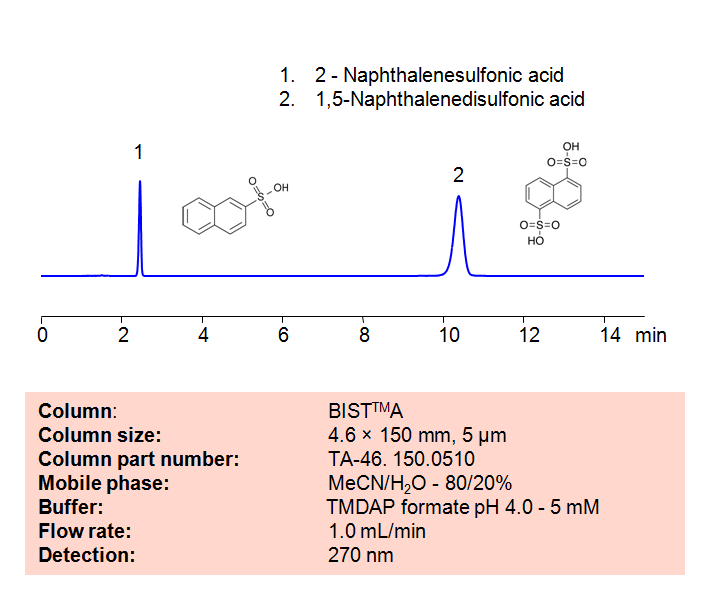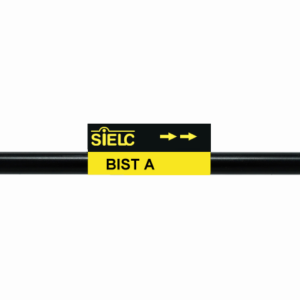HPLC Method for Analysis of 2-Naphthalenesulfonic Acid, 1,5-Naphthalenedisulfonic Acid on BIST A Column by SIELC Technologies

2-Naphthalenesulfonic acid and 1,5-Naphthalenedisulfonic acid, also known as Armstrong’s acid, are two similarly-structured compounds. 2-Naphthalenesulfonic acid is commonly used in dye production and 1,5-Naphthalenedisulfonic acid is used in synthesizing the salts of basic drugs and in electrokinetic chromatography.
2-Naphthalenesulfonic Acid is an organic compound with the formula C10H7SO3H. It is used primarily in the production of dyes, but has also historically been industrially used for a it’s various chemical reactions.
1,5-Naphthalenedisulfonic acid is a strong organic acid with a double charge. It has the chemical formula C10H8S2O6.
Using SIELC’s newly introduced BIST™ method, these two acids can be retained on a negatively-charged, cation-exchange BIST A. There are two keys to this retention method: 1) a multi-charged, positive buffer, such as N,N,N’,N’-Tetramethyl-1,3-propanediamine (TMDAP), which acts as a bridge, linking the negatively-charged tartrazine analytes to the negatively-charged column surface and 2) a mobile phase consisting mostly of organic solvent to minimize the formation of a solvation layer around the charged analytes. Using this new and unique analysis method, 2-Naphthalenesulfonic acid and 1,5-Naphthalenedisulfonic acid can be retained and UV detected at 270 nm.
Condition
| Column | BIST A, 4.6 x 150 mm, 5 µm, 100 A, dual ended |
| Mobile Phase | MeCN – 80/20% |
| Buffer | TMDAP formate pH 4.0 – 5,0 mM |
| Flow Rate | 1.0 ml/min |
| Detection | 270 nm |
Description
| Class of Compounds | Acid, Sulfonic acid |
| Analyzing Compounds | 2-Naphthalenesulfonic Acid, 1,5-Naphthalenedisulfonic Acid |
Application Column
BIST A
Column Diameter: 4.6 mm
Column Length: 150 mm
Particle Size: 5 µm
Pore Size: 100 A
Column options: dual ended
2-Naphthalenesulfonic Acid





